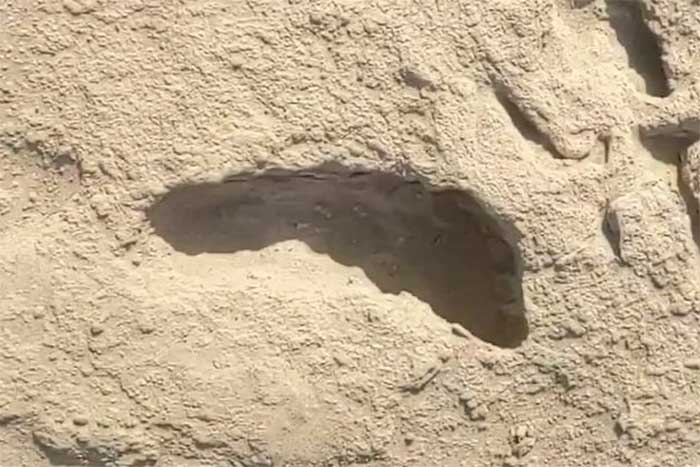For the first time in history, ancient footprints dating back 1.5 million years reveal that two species of ancient humans coexisted in the same place at the same time.
A new discovery published in the journal Science marks a significant advancement in our understanding of human evolution.
It shows that the ancient humans Homo erectus and Paranthropus boisei—the direct ancestors and distant relatives of modern humans, respectively—actually shared a habitat in the Turkana Basin, Kenya.

The mysterious 1.5 million-year-old footprints reveal surprising connections between the two species, Homo erectus and Paranthropus boisei (Photo: SA).
Craig Feibel, a geologist and anthropologist from Rutgers University (USA), stated: “The presence of footprints on the same surface, occurring closely in time, indicates that the two groups lived near each other at the lake’s edge, in the same habitat.”
Meanwhile, Kevin Hatala, a biologist from Chatham University (USA), affirmed that the footprints provided a “panoramic picture” of our ancient relatives.
“With this data, we can see how individuals who lived millions of years ago moved around and potentially interacted with each other, or even with other animal species,” Hatala said.
In addition to providing insights into the daily lives of ancient humans during the Pleistocene epoch, this new discovery also enhances our understanding of the evolutionary process of bipedalism in humans.
According to the findings, the footprints of Homo erectus closely resemble those of modern humans. Their mode of movement was also somewhat similar, as they used their heels to touch the ground first and then pushed their bodies forward using their toes.
Anthropologists believe that this walking style allowed Homo erectus to cover greater distances than any species before them, becoming the first human species to migrate out of Africa and reach as far as the Far East.


















































